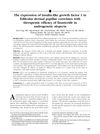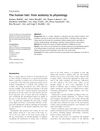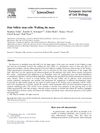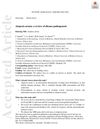Immunology of the Human Nail Apparatus: The Nail Matrix Is a Site of Relative Immune Privilege
October 2005
in “
Journal of Investigative Dermatology
”
TLDR The nail matrix has a reduced immune response, protecting it from autoimmunity.
The study investigated the immune characteristics of the human nail matrix, identifying it as a site of relative immune privilege, similar to the hair follicle. This was evidenced by the downregulation of MHC class I molecules and the presence of immunosuppressants like TGF-β1 and α-MSH, which may protect against immune attacks. The nail matrix showed reduced antigen-presenting capacity and fewer immune cells, potentially hindering defense against infections but protecting against autoimmunity. The study involved tissue specimens from 3 healthy male infants and suggested that this immune privilege could be relevant in conditions like alopecia areata, which affect both hair and nails.





